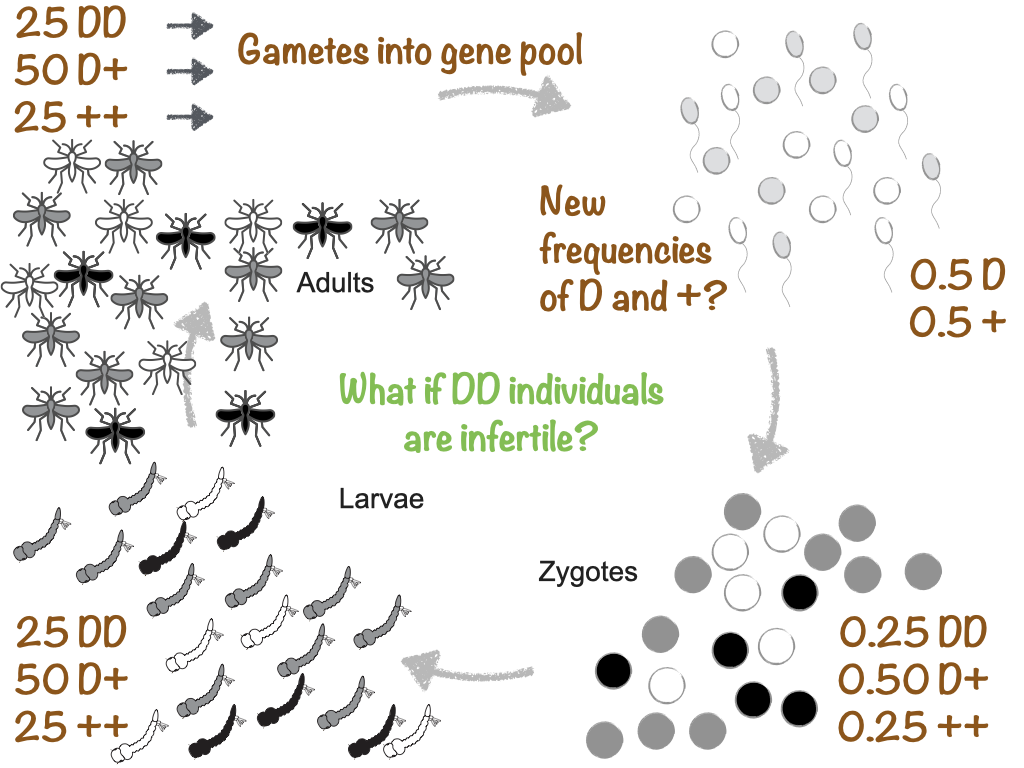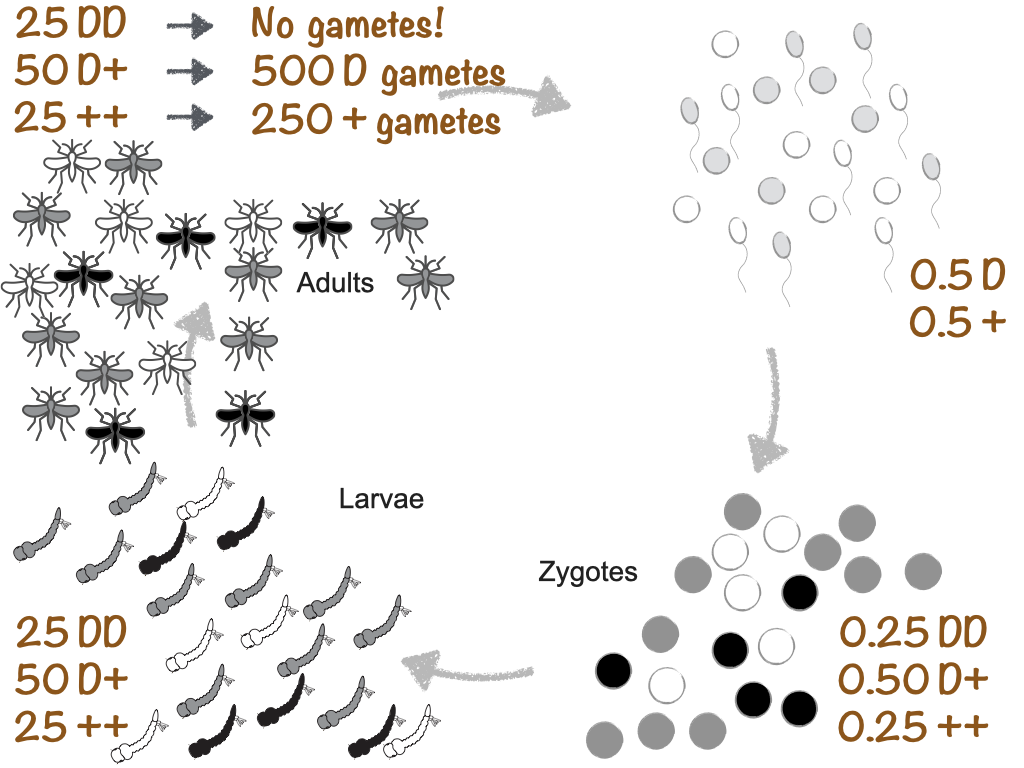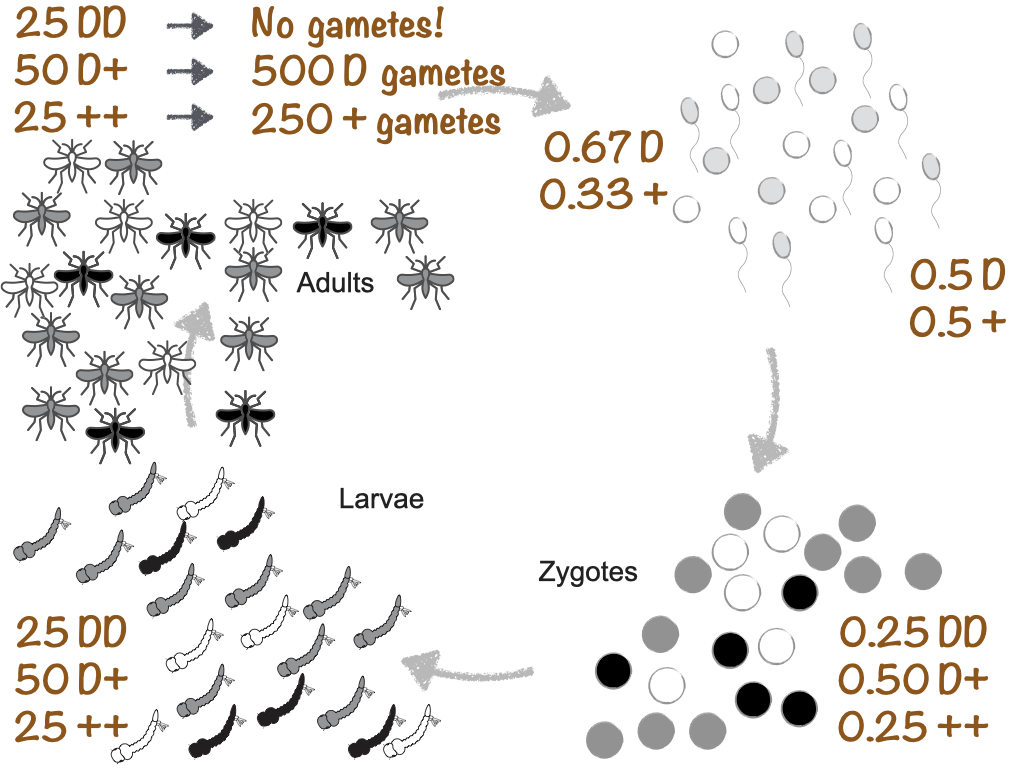9.6 Predicting how a fitness-reducing gene drive will evolve
Can we accurately predict how the gene drive’s frequency will change across generations?
Our model of virtual ducks does not distinguish between females vs. males. So let us first explore a gene drive that renders all homozygotes infertile. We start where we did last time, with frequencies of 0.5 and 0.5 in the gene pool:

The gametes combine to make zygotes, the zygotes develop into larvae, and all the larvae grow to be adults. When the adults make gametes, the heterozygotes male all D-bearing gametes—remember, allele D is a gene drive—and the DD homozygotes make no gametes at all:

All that’s left is to calculate the frequencies of the alleles in the new gene pool:

The answer:

Our analytical model indicates that a gene drive will rapidly in frequency, even when it confers on homozygotes a fitness of 0!